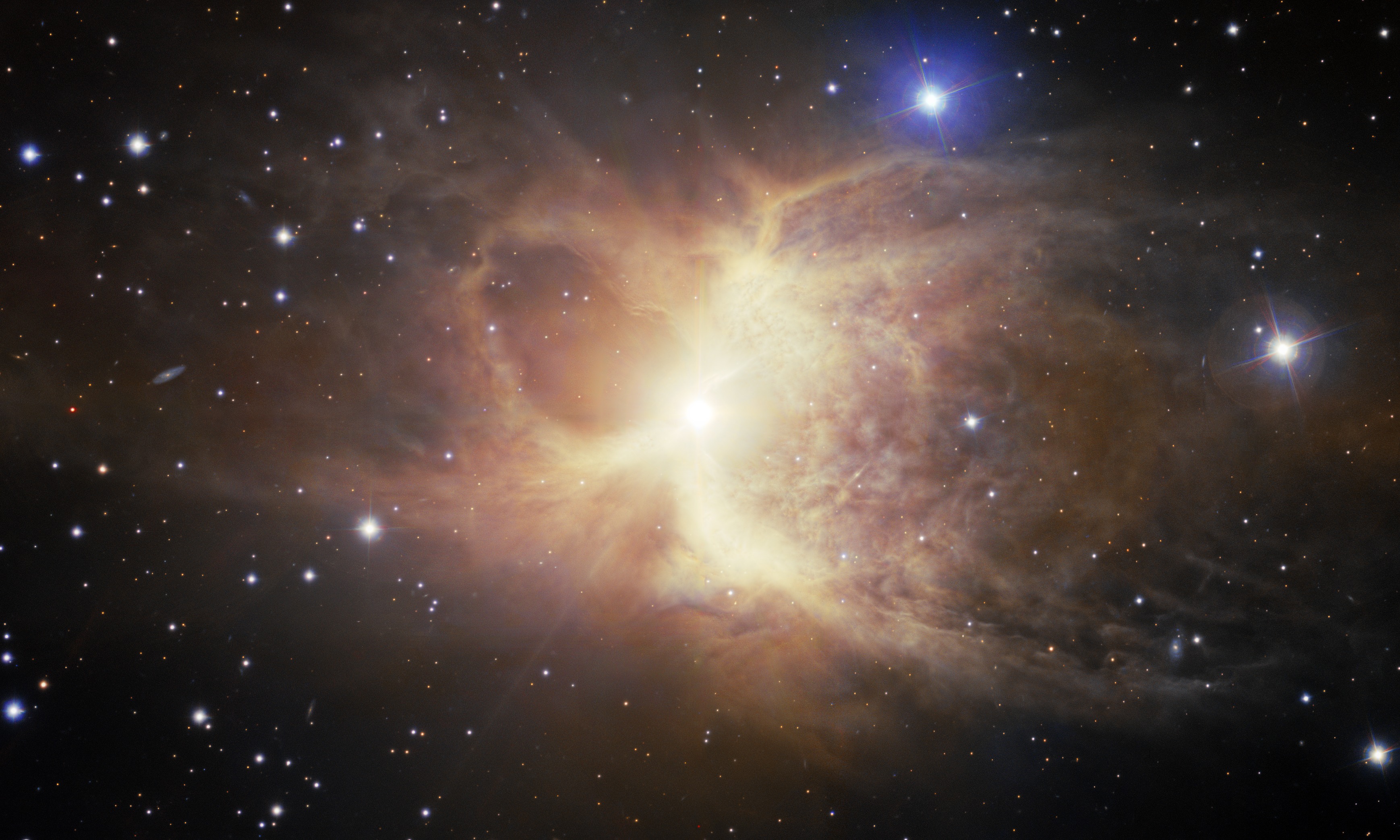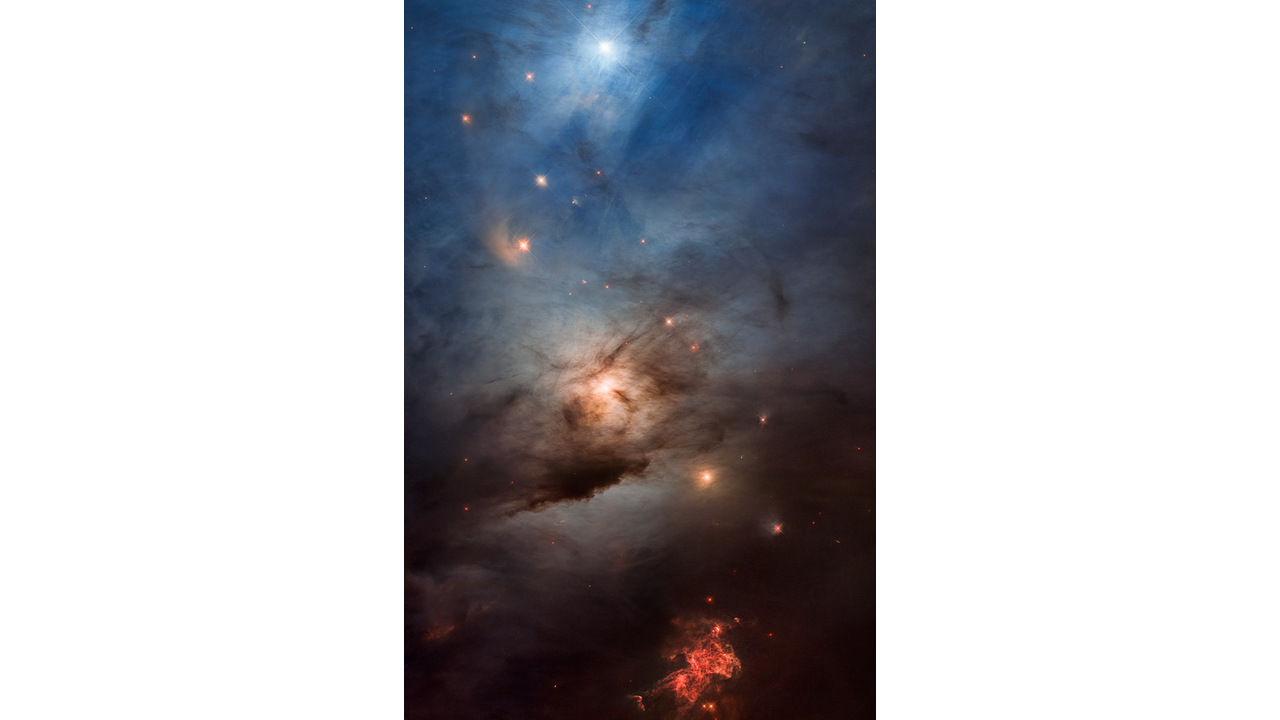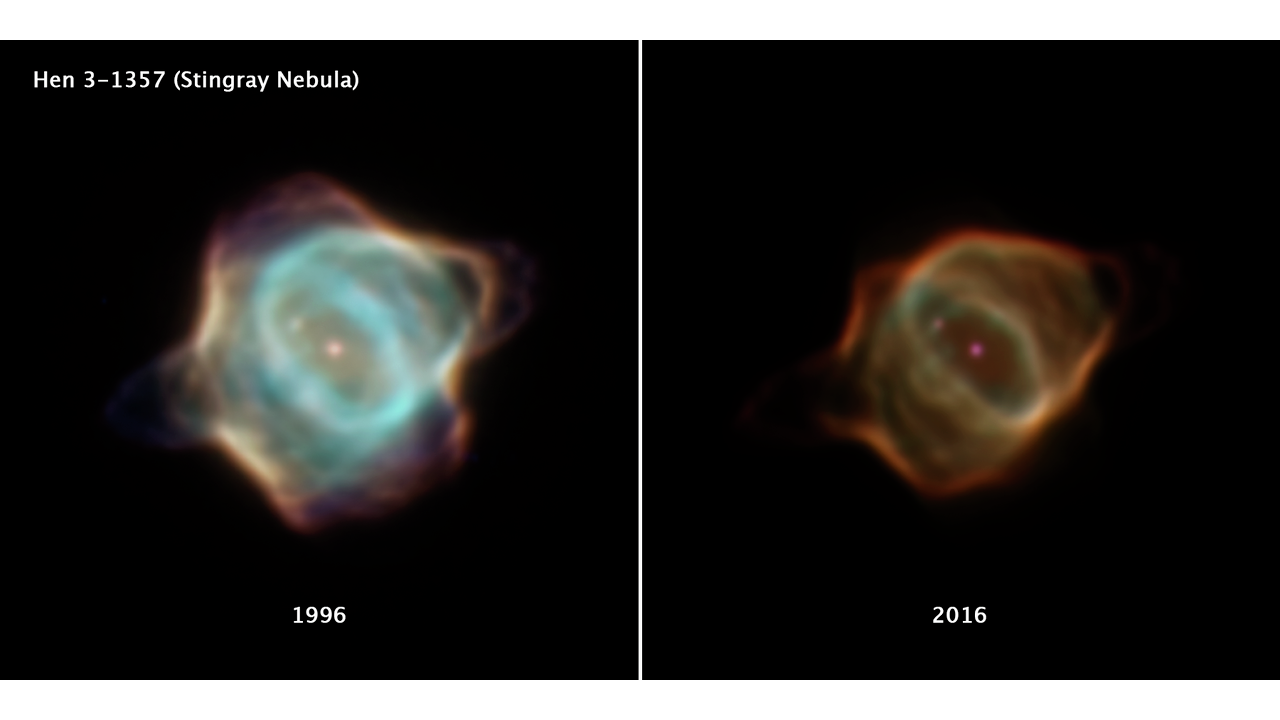Una serie de nubes simétricas y ondulantes de polvo y gas marcan la agónica muerte de una antigua estrella gigante roja, tal como lo muestra esta imagen obtenida en Chile por el telescopio Gemini Sur, parte del Observatorio Internacional Gemini, operado por AURA y NOIRLab de NSF. La estructura resultante, que se dice se parece a una jarra inglesa de estilo antiguo, es una nebulosa de reflexión bipolar que rara vez es posible de apreciar. La evidencia sugiere que este objeto se formó por las interacciones entre la estrella gigante roja moribunda y una estrella compañera destrozada hace mucho.




